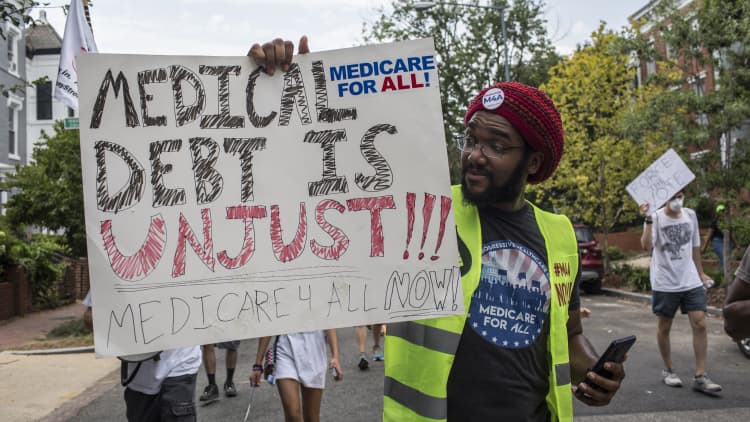[ad_1]
Hoxton/Tom Merton | Hoxton | Getty Images
If you don’t have health insurance for 2023, you may still be able to get it through the public marketplace.
Open enrollment for the federal health-care exchange ends Sunday, with coverage taking effect Feb. 1. If your state operates its own exchange, you may have more time.
Most marketplace enrollees — 13 million of 14.5 million in 2022 — qualify for federal subsidies (technically tax credits) to help pay premiums. Some people may also be eligible for help with cost sharing, such as deductibles and copays on certain plans, depending on their income.
More from Personal Finance:
3 key moves to make before tax filing season opens
Here’s how to best prepare for home repair expenses
The best way to pay down high-interest credit card debt
So far, nearly 15.9 million people have signed up through the exchange during this open enrollment, which started Nov. 1. Four out of 5 customers can find 2023 plans for $10 or less per month after accounting for those tax credits, according to the Centers for Medicare & Medicaid Services.
After the sign-up window closes, you’d generally need to experience a qualifying life event — i.e., birth of a child or marriage — to be given a special enrollment period.
For the most part, people who get insurance through the federal (or their state’s) exchange are self-employed or don’t have access to workplace insurance, or they don’t qualify for Medicare or Medicaid.

The subsidies are still more generous than before the pandemic. Temporarily expanded subsidies that were put in place for 2021 and 2022 were extended through 2025 in the Inflation Reduction Act, which became law in August.
This means there is no income cap to qualify for subsidies, and the amount anyone pays for premiums is limited to 8.5% of their income as calculated by the exchange. Before the changes, the aid was generally only available to households with income from 100% to 400% of the federal poverty level.
The marketplace subsidies that you’re eligible for are based on factors that include income, age and the second-lowest-cost “silver” plan in your geographic area (which may or may not be the plan you enroll in).
[ad_2]
